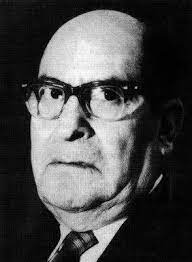Toribio Mejía Xesspe
Toribio Mejía Xesspe (1896-1984) was a prominent Peruvian archaeologist and anthropologist, best known for his pioneering work in the study of Peru's pre-Columbian cultures. Born in the small town of Coracora, in the Ayacucho region of Peru, Mejía Xesspe initially trained as a teacher before developing an interest in archaeology and anthropology, fields in which he would leave a lasting impact.
Early Life and Education[edit | edit source]
Toribio Mejía Xesspe was born on April 10, 1896. From a young age, he showed a keen interest in the rich cultural heritage of his homeland. He pursued his education at the Universidad Nacional Mayor de San Marcos in Lima, where he studied under the tutelage of renowned Peruvian scholars such as Julio C. Tello, often referred to as the "father of Peruvian archaeology." Under Tello's guidance, Mejía Xesspe's passion for archaeology and anthropology flourished.
Career and Contributions[edit | edit source]
Mejía Xesspe's most significant contribution to the field of archaeology was his work on the Nazca Lines, a series of large ancient geoglyphs in the Nazca Desert, in southern Peru. He was among the first to systematically study these enigmatic figures, and his research helped to bring international attention to the site. His work laid the groundwork for future studies and contributed significantly to our understanding of the Nazca culture.
In addition to his work on the Nazca Lines, Mejía Xesspe conducted extensive archaeological and anthropological research throughout Peru. He was instrumental in the excavation and study of many pre-Columbian sites, contributing valuable knowledge about Peru's ancient civilizations. His research spanned a variety of topics, including the study of ancient textiles, pottery, and burial practices.
Mejía Xesspe also played a crucial role in the development of archaeology as a scientific discipline in Peru. He was a professor at the Universidad Nacional Mayor de San Marcos, where he mentored a new generation of Peruvian archaeologists and anthropologists. His dedication to teaching and research helped to establish a strong foundation for the study of Peru's ancient cultures.
Legacy[edit | edit source]
Toribio Mejía Xesspe passed away on March 2, 1984, leaving behind a legacy that has had a lasting impact on the field of archaeology and anthropology in Peru and beyond. His pioneering work and dedication to uncovering the mysteries of Peru's ancient past have inspired countless researchers and scholars. Today, he is remembered as one of Peru's most distinguished archaeologists, whose contributions have enriched our understanding of pre-Columbian cultures.
Mejía Xesspe's life and work continue to be celebrated in Peru and by the international scholarly community. His contributions to the study of the Nazca Lines and other pre-Columbian sites have made him a key figure in the history of archaeology in South America.
Navigation: Wellness - Encyclopedia - Health topics - Disease Index - Drugs - World Directory - Gray's Anatomy - Keto diet - Recipes
Search WikiMD
Ad.Tired of being Overweight? Try W8MD's physician weight loss program.
Semaglutide (Ozempic / Wegovy and Tirzepatide (Mounjaro / Zepbound) available.
Advertise on WikiMD
WikiMD is not a substitute for professional medical advice. See full disclaimer.
Credits:Most images are courtesy of Wikimedia commons, and templates Wikipedia, licensed under CC BY SA or similar.Contributors: Prab R. Tumpati, MD

